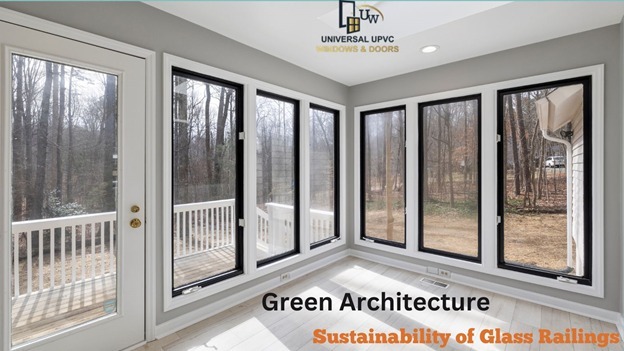Call Us
Email Us

In the world of sustainable architecture, there is an increasing emphasis on the importance of using cutting-edge materials and innovative designs. While glass was traditionally limited to window and facade applications, it has now emerged as a pivotal component in contemporary construction, particularly in the realm of railings. This transition towards incorporating glass railings in Pune not only brings a sense of elegance to architectural compositions but also plays a significant role in promoting sustainability and energy efficiency.
Glass railings offer a unique advantage in terms of transparency and light efficiency. Unlike traditional materials, such as wood or metal, glass allows natural light to permeate through spaces, reducing the need for artificial lighting during the day. This inherent quality not only enhances the visual appeal of the structure but also aligns with eco-friendly principles by minimizing energy consumption.
One of the standout features of glass is its recyclability. Unlike certain materials that degrade over time, glass can be recycled repeatedly without losing its quality. This property makes glass railings an environmentally responsible choice. Furthermore, the durability of glass ensures a longer lifespan for structures, reducing the frequency of replacements and minimizing the environmental impact associated with manufacturing and disposal.
Glass Railings: Contributing to Sustainable and Energy-Efficient Designs
Glass railings, when designed with thermal insulation in mind, contribute to energy-efficient building designs. Advanced glass technologies, such as double or triple glazing, enhance the thermal performance of glass railings. By preventing heat transfer, these railings help maintain comfortable indoor temperatures, reducing the reliance on heating and cooling systems. This energy conservation not only benefits the environment but also leads to cost savings for building occupants.
Innovative architects are taking sustainability a step further by integrating glass railings with renewable energy sources. Solar panels embedded within the glass can harness sunlight and convert it into electricity. This dual-purpose functionality not only makes structures more energy-independent but also exemplifies the seamless fusion of aesthetics and sustainability.
Showcasing Cutting-Edge and Innovative Designs in Glass Railings
Architects and designers are pushing the boundaries of creativity with minimalist designs that maximize the impact of glass railings. Frameless glass railings, for instance, create a seamless and unobstructed view, blurring the lines between indoor and outdoor spaces. This design approach not only enhances the visual appeal but also fosters a sense of openness and connectivity with nature.
Incorporating dynamic lighting elements into glass railings adds an extra layer of innovation. LED lights integrated within the railings can be programmed to change colors or patterns, creating a dynamic and visually engaging atmosphere. This not only serves an aesthetic purpose but also allows for energy-efficient lighting solutions that adapt to different moods and occasions.
Pushing the Boundaries of Creativity: Architects and Designers Leading the Way
Architects are combining the use of sustainable materials with glass to create environmentally conscious designs. For example, pairing glass railings with reclaimed wood or recycled metal supports not only enhances the overall aesthetic but also reinforces the commitment to sustainable practices.
Biophilic design principles are gaining prominence in architectural trends, and glass railings provide an ideal canvas for integrating greenery into structures. Vertical gardens or potted plants strategically placed along glass railings contribute to improved air quality and a connection with nature, aligning with the broader goals of sustainable and eco-friendly architecture.
To summarize, the introduction of glass railings into architectural schemes is a significant achievement in the domain of environmentally friendly and energy-efficient methods. Architects and designers are leading the charge in designing buildings that are not only physically appealing but also connected with the urgent call for environmental responsibility, with an emphasis on ecologically friendly materials and imaginative designs. Glass railings serve as a good example of how beauty and practicality can seamlessly coexist in the pursuit for a more sustainable tomorrow at Universal UPVC Windows and Doors in Pune , as we continue to dive into the potential of eco-friendly design.